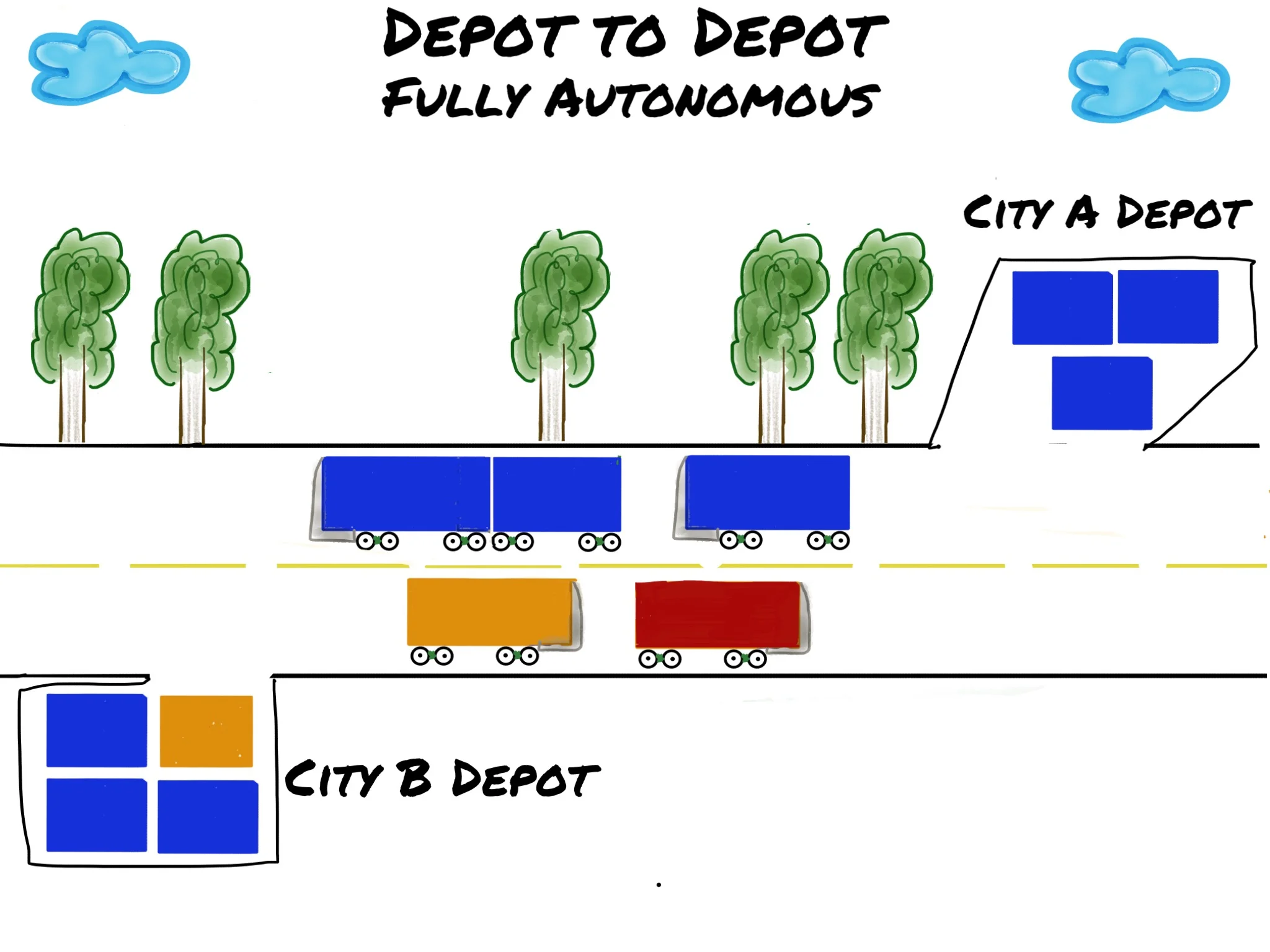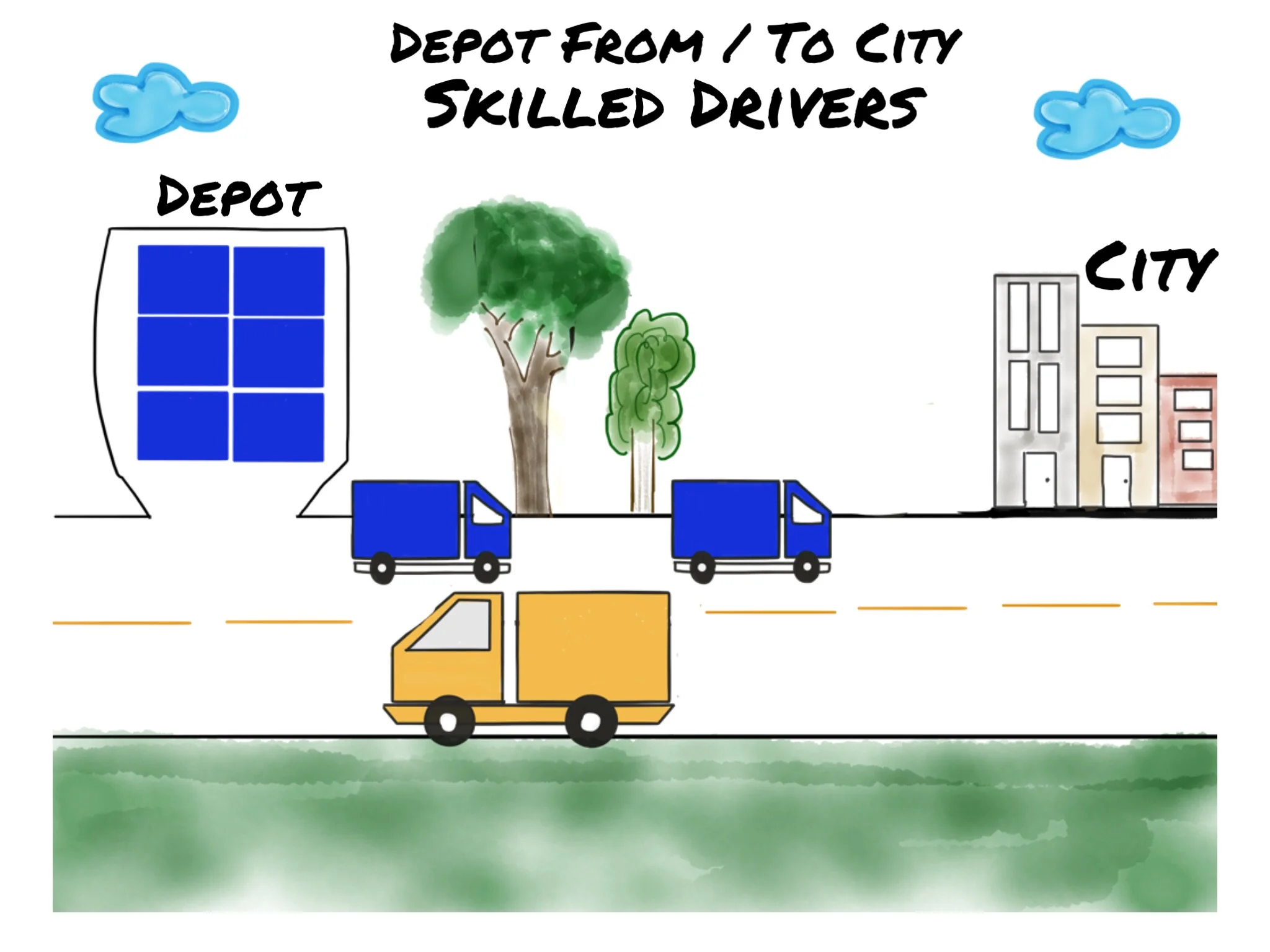Long-Haul Trucking: The First and Best Use Case for Level 5 Self-Driving Vehicles
/In July 2016, inspired by Elon Musk’s Master Plan, Part Deux, I laid out a concept for self-driving vehicles for long-haul trucking. I thought I would expand upon that concept in this post.
Transportation has been the source of some of the greatest innovations in human history from the invention of the wheel to automobiles, ships , trains, planes, and rockets. These innovations have profoundly impacted how we move around, how we trade, and how quickly and cost effectively this all happens. Fully autonomous self-driving vehicles on all roads and in all driving conditions may very well be the next great innovation in transportation, but the journey will likely be a long one.
The 5 Levels of Autonomy
SAE International, an automotive standardization body, classifies autonomous vehicles into five different levels:
Level 1 - Driver Assistance
Driving is shared by the system and the driver. Examples include cruise control and parking assistance.
Level 2 - Partial Automation
Some driving is automated for very narrow use cases, but the driver must be alert and ready to intervene immediately. Tesla's auto-pilot is considered level 2. Many view this level of automation as useless in the longer term as the driver needs to remain at the same level of alertness as if she was driving.
Level 3 - Conditional Automation
All driving is automated for specific use cases - like driving at certain speeds on highways. The driver is able to do other important tasks, like watch a movie. The driver needs to be ready to resume control within a specified time-frame. Audi's A8 is reported to be a level 3 vehicle.
Level 4 - High Automation
A step up from level 3, but if the driver does not resume control within a specified time-frame, the vehicle can handle the situation. Ford is working on Level 4 self-driving taxis, planned for 2021.
Level 5 - Full Automation
The system does driving in all conditions - highways, city streets, rain, snow etc.. No steering wheel is required.
Reaching full Level 5 automation and being able to drive in any road condition, in every city while viable technically, is probably many, many years away.
However, achieving level 5 automation for a defined use case, like highway driving only, is achievable within the next few years. It would be a slight step up technically from Level 4 automation, but a tremendous advancement for the transportation industry.
Why Long Haul Trucking is the best Use Case for Self-Driving Vehicles
There are several reasons why long haul trucks are a good starting point for a Level 5 fully autonomous vehicle:
Technical: Highways are constrained environments that are very consistent across states and will be far less challenging to navigate for a fully autonomous vehicle than suburbs and city streets. Trucks travel long distances where everyone is moving in the same direction at the same speed and there are no pedestrians. The major technical problems have already been solved for this type of autonomous driving.
Economic: Since trucking moves about 70% of the nation’s freight and since highways account for about 80-90% of the mileage of a long haul truck, there is a highly compelling economic incentive to get fully autonomous long-haul trucks into operation. Driver’s wages comprise about 40% of the cost per mile according to the American Transportation Research Institute. The savings would be big and it’s why Uber purchased Otto and why Mercedes, Volvo, Tesla, and others are all working on autonomous long-haul trucks.
Truck driver shortage: There is a growing shortage of drivers as older drivers retire and younger people are reluctant to enter the industry. According to the American Trucking Association, the industry needs to hire 900,000 drivers to meet rising demand. And, according to the Bureau of Labor Statistics, the average age of a commercial truck driver is 55 year old. This problem is not going away.
Safety: In 2015 there were 4,067 people killed and 116,000 people injured in the United States by large trucks. In theory, fully autonomous trucks could bring those numbers close to zero.
Labor: Hours of service regulations limit a drivers work week to 60 hours and mandate specific break times. This results in vehicles sitting idle for long stretches of a time and limits the earnings for the driver. As an example, a journey from Chicago to Miami would take a human driver a minimum of 31 hours to complete due to hours of service regulations while a fully autonomous vehicle could complete the trip in 20 hours. Under ideal conditions, a fully autonomous truck could operate almost 24 hours per day.
An Exit-to-Exit Approach
The concept is an exit-to-exit approach where fully autonomous truck fleets shuttle trailers between cities with local drivers taking over at depots close to the highways to make the final deliveries. Skilled drivers who can handle complex tasks like city driving and congested urban streets, make pickups locally and drop off the trailers at depots located right off the highway on the outskirts of town.
At the depot, the trailer would be loaded onto an autonomous vehicle. The autonomous vehicle would travel without a driver and drop off at the depot nearest the destination city for the load. From this depot, another driver would make the final delivery. Skilled drivers perform the difficult tasks of getting the truck to and from the depot locally, and the artificial intelligence does the easy highway driving between depots.
Think of the local driver similar to that of a maritime pilot who maneuvers large ships into and out of congested ports. Similarly, the human driver would be tethered to a local depot and would make many picks up and deliveries throughout the course of the day without having to go on long overnight journeys.
Conclusion
This model could help with the labor shortfall in the short term (long term, there won’t be many trucking jobs) as some may find the job more attractive if they are working locally instead of going out on long multiple day or week journeys. It might also bring experienced drivers back into the labor market who left due to the demanding nature of the job. Significant cost savings could be expected as the bulk of the miles would be traveled at a much lower cost. Fuel efficiency gains could be expected through platooning and the fact that trucks could be designed for fuel efficiency independently for highway driving and city driving. Lastly, fewer accidents would drive down insurance premiums.
The eventual saving would be in the billions and would impact any industry that relies on truck transport, which is basically every industry. The general public would benefit from reduced costs of goods and safer highways. These two reasons alone make fully autonomous trucks on highways the first and best use case for Level 5 self-driving vehicles.













